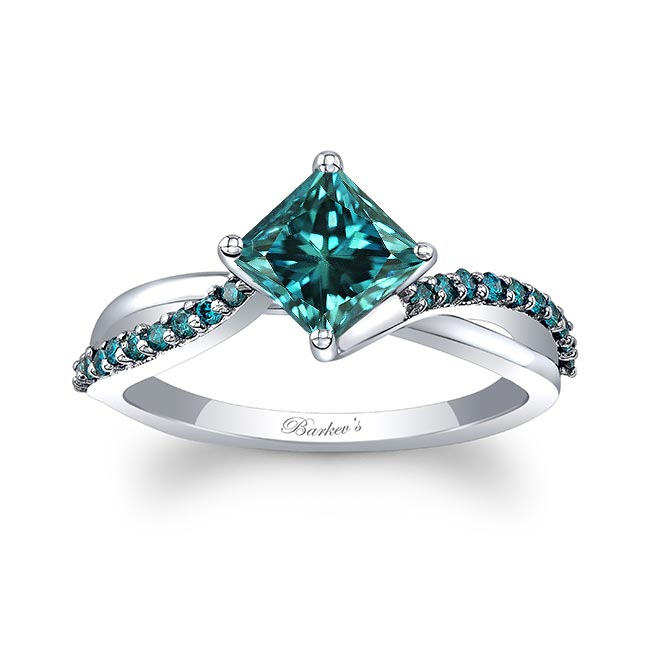Not every diamond extracted from the Earth is worthy to go on your finger. Of the millions of carats we mine each year, only 20% of it actually ends up in jewelry.
That said, not every diamond in that 20% is the transparent kind you’re imagining, either. Some of them contain traces of color, taking on a yellowish sheen that can negatively impact the value. Unless that is, you luck upon a natural blue diamond.
That’s right, diamonds found in nature can acquire a bluish tint reminiscent of a sapphire. They are rare enough that the phrase “blue diamond” might make someone double-take.
How does a natural blue diamond compare to a regular diamond? Read on for an answer to that question and more in this article.
How Does a Regular Diamond Form?
To understand how diamonds become blue, you must understand how they form.
The process is quite tricky, geologically speaking. It kicked off as far back as 3 billion years ago, close to Mother Earth’s age. Miles deep in the mantle (the Earth’s molten interior), the process begins with pure carbon.
The carbon undergoes intense pressure and heat, many thousands of times that of our atmosphere. These pressure-cooker-like conditions force the carbon to assemble into the hardest substance known to man: diamonds.
And that’s only half the battle! To avoid melting down again, the diamonds must ascend to the crust at a quick clip via special magma pipes known as kimberlites. Then, these steaming-hot gems cool and become rough diamonds ready for extraction and cutting.
Of course, it’s very rare for diamonds to form with only pure carbon. Even the most valuable diamonds have tiny traces of other minerals. It’s thanks to these trace minerals that we get blue diamonds.
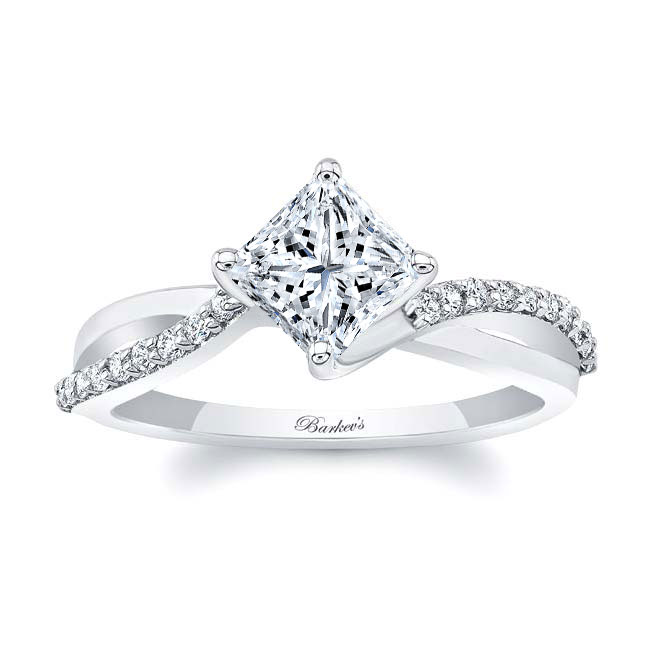
How Does a Natural Blue Diamond Form?
A blue diamond is very rare, more so than genuine diamonds with near-perfect transparency. The blue color here, however, is thanks to Boron atoms mixing into the process.
How did Boron get there in the first place? The answer is seawater. Boron is plentiful in the ocean, and oceans have been around longer than diamonds.
The Boron (obviously heavier than water) sifts down to the seabed and makes its way into the bedrock. From the bedrock, it waits for a “lift” to the mantle. That lift comes via a process that also causes earthquakes: subduction.
Yes, you can thank plate tectonics for making blue diamonds. When plates overlap (or subduct) each other, they force the Boron sediment deeper down into the transition zone between mantle and crust. It then waits until – you guessed it – it bakes into a diamond.
As an extra fun fact, blue diamonds are a helpful little forensic clue for geologists. Studying blue diamonds reveals more about the inner workings of our planet. We still have a somewhat rudimentary understanding of the Earth’s deepest processes, and blue diamonds help us learn more about them.
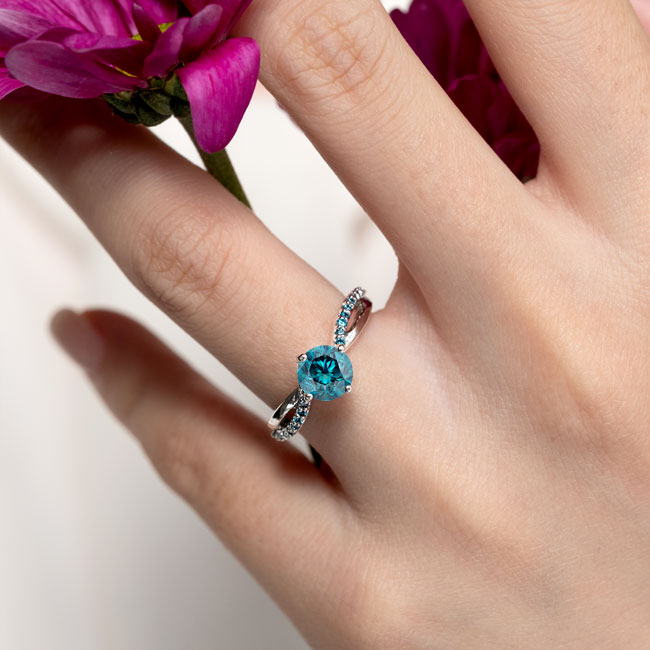
Hydrogen and Radiation
In some cases, there may be an extra ingredient: radiation. You’d think radiation would destroy the diamond, as radiation has destructive tendencies everywhere else in the universe.
Instead, the radiation reacts with the material to create stronger blue and greenish colors. The introduction of hydrogen can also add a gray or violet tone.
Blue Diamond Colors
Blue diamonds are not just one shade of blue. They come in a wide gradation from light, sky blue to deeper, royal azure. It’s easy to find one that suits your fancy.
How Does a Blue Diamond Differ From a Regular Diamond?
The process to create both is the same: carbon undergoes intense pressure and heat. Boron slips into the “mixture,” like adding some extra salt to the cake batter. There’s no special new process required to make blue diamonds, aside from some naturally occurring radiation.
In terms of hardness and gemstone properties, the two are identical. The Boron only appears in microscopic quantities, enough to give the diamond a new color. It does not impact its strength, polish, and so on.
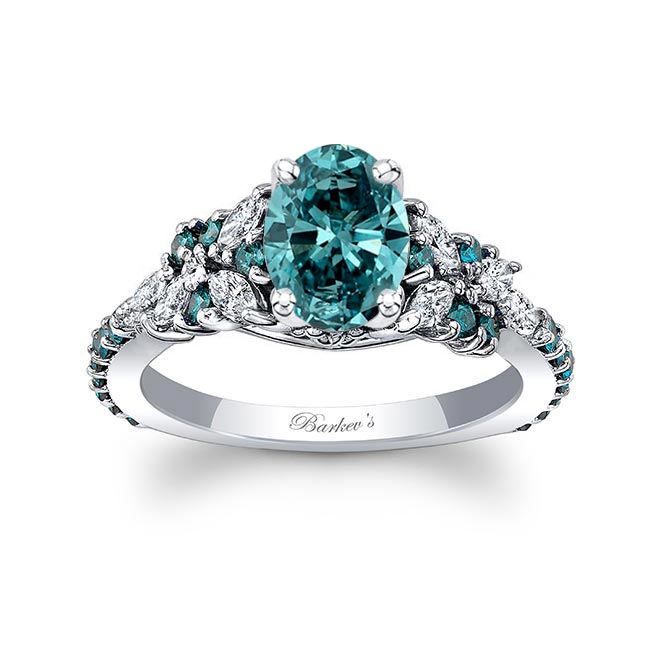
Where Do You Find Blue Diamonds?
Blue diamonds do not form in every diamond deposit around the world. Only a select few mines contain it. One of the largest is the Cullinan mine in South Africa.
This means it’s much easier to find a traditional diamond ring than a blue one.
How Valuable Are Blue Diamonds?
As we’ve said, impurities that a diamond takes on during the process usually reduce its value, not increase it. Increased nitrogen in diamonds makes them turn yellow. Yellow diamonds, on the whole, are perceived as less valuable.
Blue diamonds and other colored diamonds are exceptions to this rule. They are rarer and may, in some cases, be worth more than their counterparts. It’s easy to see why; take a look at a blue diamond for yourself.
High-quality blue diamonds, generally speaking, cost a lot more than colorless diamonds. Beauty aside, the primary factor is that rareness. Blue diamonds make up a paltry 0.02% or less of all mined diamonds.
Treated Blue Diamonds
Since blue diamonds are so rare, it stands to reason that humans would try to find ways to make more of them. More accessible and more affordable gemstones allow the common man to own one rather than just elites.
There exists a process to transform natural diamonds into blue diamonds. The resulting blue diamond is known as a “treated” blue diamond.
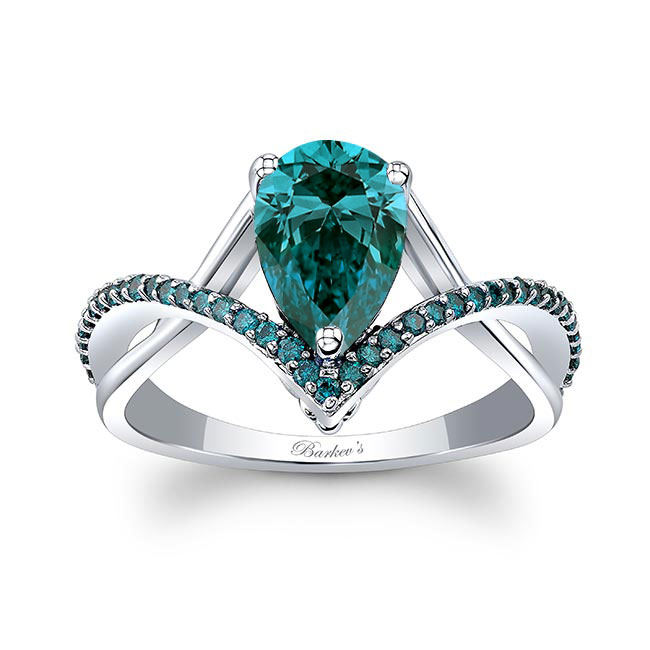
How to Make a Treated Blue Diamond
Treating a blue diamond involves a process known as “irradiation.” That’s right, it’s radiation that changes the color of a white diamond to a blue one. Same as you might see in the Earth’s core.
Never fear; this radiation is safe. Back in the day, scientists used particle accelerators and gamma rays to blast white diamonds until they turned bluish. Diamonds would then sit in “quarantine” to allow the harmful radiation to bleed away.
Thankfully, this dated procedure is no longer in practice. Ionizing radiation, like that found in nuclear reactors, is harmful to humans. Modern manufacturers now blast diamonds with high-energy electrons and neutrons, not gamma rays.
These beams penetrate the entirety of the stone over a long period. This is safer yet produces beautiful, vivid blues and greens.
This modern process of irradiation is safe for you, the consumer, as well. It uses non-ionizing radiation, i.e., the harmless variety you’d find in your microwave. Wearing a treated blue diamond on your finger is safe, no different than any other stone.
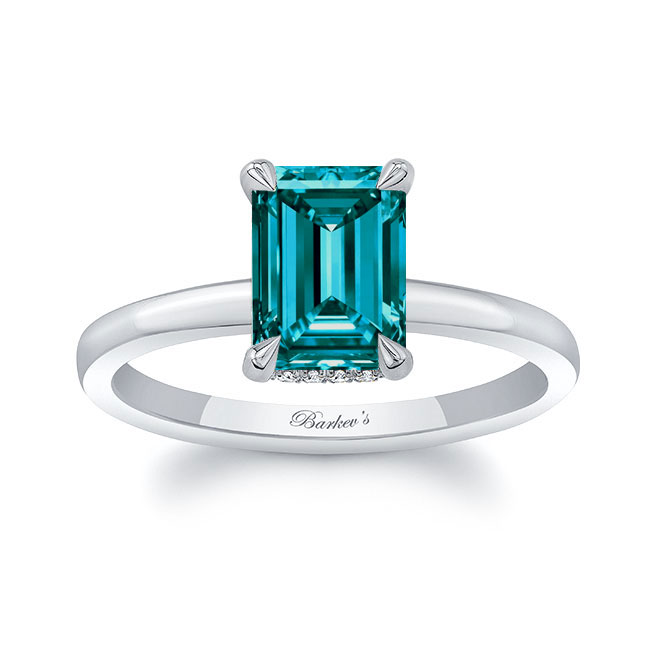
Artificial Blue Diamonds
The more perceptive readers may have noticed something. If people can make artificial diamonds, can they also make artificial blue diamonds? The answer is yes, they can.
How to Make Artificial Blue Diamonds
Artificial diamonds require processes that approximate those that occur deep in the Earth. Professionals make them with two distinct procedures:
- (HPHT) High pressure-high temperature
- (CVD) Chemical vapor deposition
HPHT is the older method and requires a couple of months, while CVD takes only a few days. Manufacturers add the necessary chemical components to get that color, which, in the case of blue diamonds, is Boron.
When it comes to the most common method (CVD), you just add a Boron gas to the reactor of the CVD machine. This creates blue diamonds that mimic their natural counterparts.
Benefits of Artificial Diamonds
Artificial diamonds do a lot more than just provide an economical solution for diamond-edged tools. Labs can create gemstone-quality diamonds for much cheaper than mining natural diamonds. As a result, artificial diamonds are far more affordable.
Artificial diamonds have seen a rise in popularity as of late. For years, the paradigm was that a diamond only has a high value if it’s 100% natural. The average person no longer accepts that notion.
Artificial diamonds don’t require mining in countries with questionable labor practices. They take up less resources, thus contributing less to the climate crisis. They are, physically speaking, almost exactly the same, too.
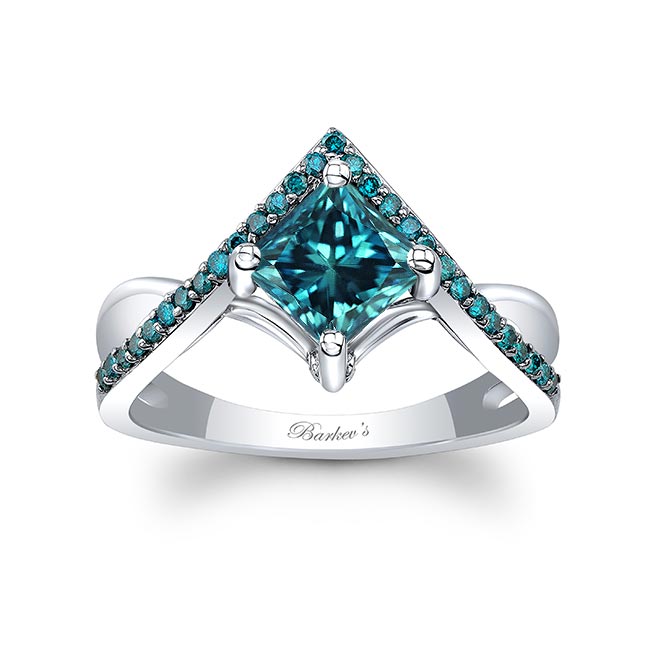
Should You Get a Blue Diamond?
There’s a perception amongst some that colored gems are “tacky” or “childish.” This is an old mindset that. Like the idea of natural diamonds being “better,” it is going the way of the dodo.
Do you find a blue diamond to be beautiful compared to a white diamond? Then get it. Simple as that.
Purchasing an engagement ring and/or wedding ring is a personal choice. You (or your partner) will be wearing that ring for the rest of your life. Do what feels best for you, not what others impose upon you.
One thing is for sure: you will stand out from the crowd. Many people opt for white diamonds out of tradition. In a sea of white, a blue star will stand out and get special attention.
Find a Ring at Barkev’s
A natural blue diamond is a rare, valuable variant of a natural white diamond. It forms by the same process, albeit with the addition of Boron and radiation. Scientists can transform white diamonds into blue diamonds or make them artificially.
Barkev’s makes unforgettable engagement and wedding rings. You can even build your own! Start here to craft a custom ring for yourself or your loved one.


